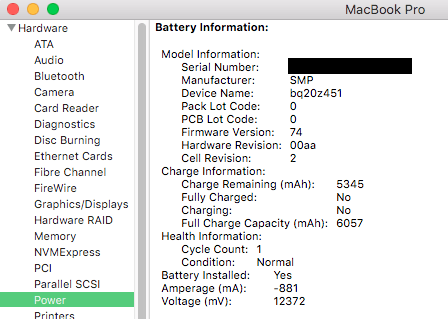I have a mid-2010 MacBook Pro 7,1 which I bought almost seven years ago because a consulting gig with a certain company required it. I am really no fan of the Steve Jobs + Apple attitude towards their users, but I with the 16 GB of memory and the SSD I put in it, this thing actually works fine for a lot of tasks that are not hugely compute intensive. In fact, if I could just upgrade its CPU just as easily as I upgraded the one in my new (to me) Thinkpad T400, I would be very happy.
Still, despite the fact that I really hate the stupid keyboard with a passion, it does work. For the past three or four years, it has been telling me that the battery needs to be replaced. Initially, the message was “Service Battery”. A couple of years later, it turned in to “Replace Now”. Recently, battery life fell to an annoying 90 minutes. Honestly, it is not horrible for a seven year old battery.
So, why didn’t I replace it?
I really thought I would have to ship the laptop to Apple for their geniuses to fiddle with it. The thought of anyone at Apple touching the unauthorized upgrades created enough friction that I just dealt with it. Of course, I could have put in the original 250 GB rotational drive and the original 4 GB memory back in etc, but my heart was just not in it. I would have been willing to pay for the battery, and I have no problem with them offering the service to people who feel they need it, but, no, I am not going to let those geniuses touch my computer.
So, the MacBook Pro spent most of its days neglected, tethered to a power outlet somewhere.
Until a few days ago when I decided to take a look at what was being offered on Amazon and eBay. Now, there is some risk in buying a battery from a non-Apple source. The quality might be subpar, it might actually be dangerous etc. But I thought I’d try. On eBay, I found this battery offered by a user called hako-in. The seller’s reputation looked good, the reviews for the battery looked good, so I ordered it.
It turns out, installing a new battery in these MacBook Pros is really straightforward. Once I unscrewed the bottom, it was obvious what to do, and I did not have to consult ifixit’s guide, but you might want to do that if you have any doubts at all.
After closing the bottom, I let the battery charge for an hour before turning on the computer. I am rather inpatient, so when I turned it on, it was charged up to 78%. I used the laptop to do what I regularly do: Checked email, built the most recent version of Vim, cross-compiled some test code for my Raspberry Pi in a virtual machine etc. All seemed to be OK, and gradually, the battery got up to 100% capacity. I left it on with the lid closed overnight and charged a bit more in the morning. They I disconnected it from A/C and worked on for about an hour. Here’s what “About this Mac”’s Power tab told me at that point:
I read somewhere that the design capacity of SMP bq20z451 is 6700mAh. If that is correct, I have a unit with roughly 90% of its life. Obviously, I do not know how many cycles I’ll get out of it, but for now, it is doing its job. In normal use, the OSX battery indicator is giving me an estimate of about 7 hours which is decent, but time will tell if it holds up.
When I ordered the battery, I was ready for a disaster. In the end, I was pleasantly surprised. Thank you hako-in.
Of course, it goes without saying that you should not try this at home unless you understand the risks and are willing to assume them. In that case, you’d be better off having Apple do it for you.
